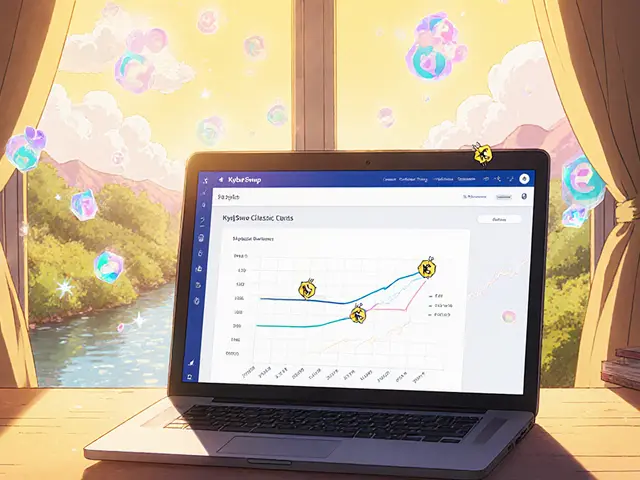Crypto Activity: Real‑Time Trends, Rules, and Market Moves
When talking about crypto activity, the collective flow of transactions, price swings, regulatory shifts, and community events that shape the digital‑asset landscape, you’re really looking at a living ecosystem. Also known as digital asset market dynamics, crypto activity pulls in data from trading platforms, policy updates, mining output and even surprise airdrops. It connects three core pillars: how people trade, how governments respond, and how technology evolves.
One pillar is crypto regulation, the set of laws, sanctions and compliance rules that govern digital‑currency use in each jurisdiction. Regulations dictate which exchanges stay open, what KYC checks are needed, and how miners report energy use. Another key piece is crypto exchanges, online marketplaces where users buy, sell and swap tokens. Exchanges act as the front‑line where activity spikes, fees shift, and new features like staking or liquid‑staking tokens appear. Finally, crypto mining, the process of securing blockchain networks by solving cryptographic puzzles and earning new coins fuels the supply side, affecting hash‑rate, difficulty adjustments and energy consumption. Each of these entities influences the overall rhythm of crypto activity, creating feedback loops that investors and analysts watch closely.
What to watch in crypto activity today
Regulation moves fast: a new KYC rule in South Korea, a licensing push in Norway, or an OFAC sanction update for Syrian users can instantly reshape trading volumes. When a government tightens rules, exchanges scramble to update their compliance stacks, and traders may shift to platforms that offer better privacy or lower fees. That’s why monitoring crypto activity means keeping an eye on policy bulletins, exchange fee tables, and mining‑sector reports side by side.
On the exchange front, you’ll see trends like fee wars between giants like Binance and newcomers such as OccamX or GJ Crypto. Some platforms add token‑based rebates, others tighten security after a breach, and a few launch novel products like liquid‑staking tokens (e.g., Mantle Staked Ether). These moves directly affect liquidity, slippage and the overall health of the market. If an exchange suddenly raises fees or faces a regulatory fine, you’ll notice a dip in trade volume—one of the most visible signals of shifting crypto activity.
Mining updates are equally telling. Countries like Kazakhstan and Iran impose new energy caps or licensing requirements, which can throttle hash‑rate and push miners to more favorable jurisdictions. When a major mining pool shuts down, difficulty drops, making it easier for smaller miners to join, and that ripples through block times and transaction costs. Watching mining policy and hash‑rate trends gives you a backstage pass to the supply side of crypto activity.
Don’t overlook the buzz around airdrops and token launches. Projects such as Galaxy Adventure Chest NFTs or Lympo Market Token often release free tokens to stimulate community growth. These drops can spike wallet activity, drive short‑term price moves, and create viral marketing effects. They also serve as a litmus test for how engaged a community is, which feeds back into exchange listings and regulatory scrutiny.
All these threads—regulation, exchanges, mining, airdrops—interlock to shape the ebb and flow of crypto activity. By understanding how each entity works and how they influence one another, you’ll be equipped to spot trends before they become headlines. Below you’ll find a curated set of articles that break down each piece in detail, from VPN risks in Iran to deep dives on new exchange reviews, mining policy shifts, and the latest tokenomics of emerging coins. Dive in and get the actionable insights you need to stay ahead of the market.
17
Bank Account Freezing for Crypto Activity: 2025 Guide
Learn why banks freeze accounts linked to crypto in 2025, how new U.S. and EU regulations work, and practical steps to avoid disruptions.
Latest Posts
Popular Posts
-
 What Is Collateralization in DeFi? A Clear Guide to How It Works and Why It Matters
What Is Collateralization in DeFi? A Clear Guide to How It Works and Why It Matters
-
 Xena Exchange Crypto Exchange Review: Professional Tools vs. Regulatory Risks
Xena Exchange Crypto Exchange Review: Professional Tools vs. Regulatory Risks
-
 What is Bitgert (BRISE) crypto coin? Full breakdown of the blockchain, tokenomics, and real-world performance
What is Bitgert (BRISE) crypto coin? Full breakdown of the blockchain, tokenomics, and real-world performance
-
 What is Privix New (PRIVIX) Crypto Coin? Facts, Price, and Risks in 2025
What is Privix New (PRIVIX) Crypto Coin? Facts, Price, and Risks in 2025
-
 What is LUXO (LUXO) crypto coin? The truth about the luxury authentication token
What is LUXO (LUXO) crypto coin? The truth about the luxury authentication token
Tags
- crypto exchange
- cryptocurrency
- crypto exchange review
- meme cryptocurrency
- blockchain
- cryptocurrency compliance
- Binance Smart Chain
- CoinMarketCap airdrop
- underground crypto Nepal
- crypto airdrop guide
- crypto staking
- Bitcoin mining Iran
- airdrop
- Ethereum staking
- GENIUS Act
- liquid staking
- cryptocurrency exchange security
- crypto
- crypto airdrop
- crypto regulations



